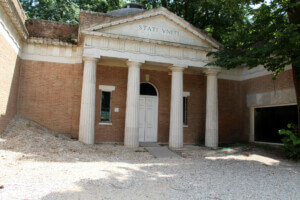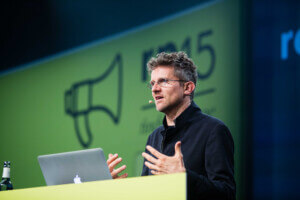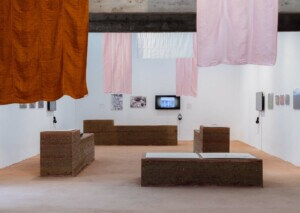When Rem Koolhaas gave the 14th Venice Architecture Biennale the theme Fundamentals, he promised to create a research-based exhibition that would consider both the universal and place-specific aspects of the discipline. Serving as a counterweight to the multidisciplinary but single-country-focus of Monditalia, which fills the Arsenale at the Venice Biennale, the Central Pavilion in the Giardini is hosting The Elements of Architecture, which looks at the basic components of building around the world: the floor, walls, windows, stairs, elevators, etc. Based on a book of the same name, the exhibition juxtaposes the mundane and the cutting edge, building science with artistic interpretations, historical facts with speculative futures.
The gallery devoted to “walls”, for instance, has a row of examples different construction techniques from different historical periods. Beginning with stone fragments, the collection includes a lathe and plaster wall, which ably illustrates the artistry that can turn plaster into confection-like moldings, and ends with a glass fire wall and a tensile kinetic wall by Barkow Leibinger. This range is both obvious and interesting, illustrating the diversity of even architecture’s most basic elements.
A nearby room devoted to “toilets” includes a throne-like Roman toilet—on loan from the Victoria and Albert Museum in London—a curious Victorian mechanical example, a 19th century flowered urinal, as well as contemporary loos. Just inside an alcove is footage of mid-20th century police busts of men having illicit sex in public restrooms—often through entrapment. The grainy footage adds a somber note to the otherwise giggle-inducing gallery.
The gallery on “roofs” includes a fascinating look at an 11th century Chinese building code, which details the elaborate roof assembly of many Chinese buildings. A collection of salvaged English windows—Gothic points and leaded glass—contrasts with a factory window system made by machine (at top). Though the factory-built windows have every advantage over their leaky wooden predecessors, one can’t help but be charmed by the “Englishness” of the historical objects.
The room devoted to “facades”, organized by Alejandro Zaero-Polo, is perhaps the most satisfying, with full scale mock-ups from Herzog & de Meuron to Jean Prove (exhibition view at left). Curtain walls, highly insulated panels, green walls, rain screens, double facades, and other elements are explained in detail, and their strengths and limitations are put up for debate. (The text on green walls is called “Greenwashing,” though the text is less controversial than one might expect. The system on display includes both live plants and smog-eating coatings, so the curator asks which is more effective or important, the feel-good foliage or the invisible coating?)
Large group exhibitions usually feel both inspiring and scattershot, and Fundamentals is no exception. The Elements of Architecture helps ground this Biennale in the real world, allowing other pavilions and participants to freedom to speculate and dream.










